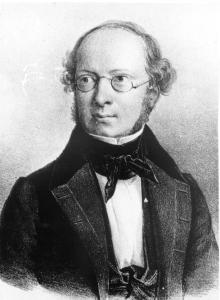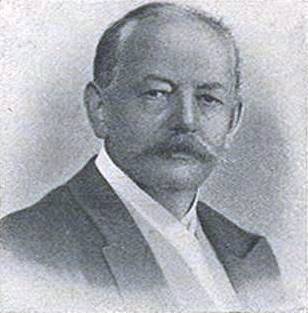
Odesa is the third most populous city and municipality in Ukraine and a major seaport and transport hub located in the south-west of the country, on the northwestern shore of the Black Sea. The city is also the administrative centre of the Odesa Raion and Odesa Oblast, as well as a multiethnic cultural centre. As of January 2021, Odesa's population was approximately 1,010,537. On January 25, 2023, its historic city centre was declared a World Heritage Site and added to the List of World Heritage in Danger by the UNESCO World Heritage Committee in recognition of its influence on cinema, literature, and the arts. The declaration was made in response to the bombing of Odesa during the 2022 Russian invasion of Ukraine, which has damaged or destroyed buildings across the city.

A botanical garden or botanic garden is a garden with a documented collection of living plants for the purpose of scientific research, conservation, display, and education. Typically plants are labelled with their botanical names. It may contain specialist plant collections such as cacti and other succulent plants, herb gardens, plants from particular parts of the world, and so on; there may be greenhouses, shadehouses, again with special collections such as tropical plants, alpine plants, or other exotic plants. Most are at least partly open to the public, and may offer guided tours, educational displays, art exhibitions, book rooms, open-air theatrical and musical performances, and other entertainment.

Ethnobotany is the study of a region's plants and their practical uses through the traditional knowledge of a local culture and people. An ethnobotanist thus strives to document the local customs involving the practical uses of local flora for many aspects of life, such as plants as medicines, foods, intoxicants and clothing. Richard Evans Schultes, often referred to as the "father of ethnobotany", explained the discipline in this way:
Ethnobotany simply means ... investigating plants used by societies in various parts of the world.

Abies nordmanniana, the Nordmann fir or Caucasian fir, is a fir indigenous to the mountains south and east of the Black Sea, in Turkey, Georgia and the Russian Caucasus. It occurs at altitudes of 900–2,200 m on mountains with precipitation of over 1,000 mm.

Alexander Georg von Bunge was a Russian botanist. He is best remembered for scientific expeditions into Asia and especially Siberia.

Baron Sir Ferdinand Jacob Heinrich von Mueller, was a German-Australian physician, geographer, and most notably, a botanist. He was appointed government botanist for the then colony of Victoria (Australia) by Governor Charles La Trobe in 1853, and later director of the Royal Botanic Gardens, Melbourne. He also founded the National Herbarium of Victoria. He named many Australian plants.

Nikolaus Joseph Freiherr von Jacquin was a scientist who studied medicine, chemistry and botany.

Royal Botanic Gardens Victoria are botanic gardens across two sites–Melbourne and Cranbourne.

Johann Heinrich Friedrich Link was a German naturalist and botanist. The standard author abbreviation Link is used to indicate this person as the author when citing a botanical name.

Alexander von Nordmann was a 19th-century Finnish biologist, who contributed to zoology, parasitology, botany and paleontology.

The A.V. Fomin Botanical Garden is one of the oldest botanical gardens in Ukraine, located in Kyiv, the capital of Ukraine. In 1839 the Saint Vladimir Imperial University of Kiev opened its own botanical garden. The botanical garden is 22.5 hectares (0.225 km2), with 8,000 plant species, including 143 recorded in the Red Data Book of Ukraine. The Garden is famous for its exotic plants: it has the biggest collection of succulents among the countries of the former Soviet Union. The greenhouse, which was built for the largest and the oldest palm trees in Northern Eurasia, is among the highest in the world. In 1935, the garden was named after the academician and botanist Aleksandr Vasiljevich Fomin, who directed the garden for years. The vestibule of the Kyiv Metro station Universytet, is located on the northern edge of the garden, which was opened in 1960.(Google Maps link).

Caspar Georg Carl Reinwardt was a Prussian-born Dutch botanist. He is considered to be the founding father of Bogor Botanical Garden in Indonesia.

Heinrich Gustav Adolf Engler was a German botanist. He is notable for his work on plant taxonomy and phytogeography, such as Die natürlichen Pflanzenfamilien, edited with Karl A. E. von Prantl.
Martín Sessé y Lacasta was a Spanish botanist, who relocated to New Spain during the 18th century to study and classify the flora of the territory. The standard author abbreviation Sessé is used to indicate this person as the author when citing a botanical name.

Elmer Drew Merrill was an American botanist and taxonomist. He spent more than twenty years in the Philippines where he became a recognized authority on the flora of the Asia-Pacific region. Through the course of his career he authored nearly 500 publications, described approximately 3,000 new plant species, and amassed over one million herbarium specimens. In addition to his scientific work he was an accomplished administrator, college dean, university professor and editor of scientific journals.

Odesa I. I. Mechnykov National University, located in Odesa, Ukraine, is one of the country's major universities, named after the scientist Élie Metchnikoff, a Nobel prizewinner in 1908. The university was founded in 1865 by an edict of Tsar Alexander II of Russia, which reorganized the Richelieu Lyceum of Odesa into the new Imperial Novorossiya University. In the Soviet era, the university was renamed Odesa I. I. Mechnykov State University.

Christian von Steven was a Finnish-born Russian botanist and entomologist.

A physic garden is a type of herb garden with medicinal plants. Botanical gardens developed from them.

Wilibald Swibert Joseph Gottlieb von Besser, known in Russia as Vilibald Gotlibovich Besser was an Austrian-born botanist active in former eastern territories of Poland occupied by the Russian Empire, who worked most of his life within today’s territory of western Ukraine.
George Sherman Avery, Jr. was an American botanist, expert on plant physiology, and prominent horticulturalist.





























